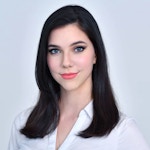VR For Daylight
Glare Analysis in a Virtual Environment
Sign in and Register
Create an Account
Overview
Abstract
Daylighting is often an important component of architectural design and heavily influenced by a building’s facade and enclosure systems. Unlike many architectural elements, daylighting is dynamic, changing constantly throughout the day and year, which can make it difficult to visualize for clients and even designers. There are several tools, both physical and digital, available for daylighting design and analysis, but they can be cumbersome and slow to provide feedback. A case study is presented in which Virtual Reality (VR) was used to contextualize graphical data from a simulated glare analysis and to present the findings to the client. Initial glare analysis was conducted using a daylighting software to evaluate critical occupant viewpoints for multiple design options. Simulations resulted in graphs of annual Daylight Glare Probability (DGP). While these graphs are useful to identify times of potential glare, they do not provide visual or timely feedback to the designer, so the project team decided to use a Virtual Reality environment to bridge this gap. Once the virtual building was set to accurate coordinates, the custom VR environment allowed for visualization of daylight and shadows in the building from any viewpoint in real-time. The designer was able to adjust the sun’s position by month, day, and hour, providing an accurate prediction of the sun’s position on any date and time. The VR environment was also set up to toggle between design options without delay. This is in comparison to rendering each iteration of viewpoint and time of year, which can be time-consuming depending on the quality and size of the image. In addition, the project team was able to use the VR environment to convey design recommendations to the client in a clear, visual manner. Use of Virtual Reality as a tool to enhance daylighting analysis allowed for faster, better informed design decisions to be made and a clearer method of presenting these decisions to the client.
Authors

Kelly Burkhart
Enclosure Technical Designer
Walter P Moore
kburkhart@walterpmoore.com

Caris Frazier-Baker
Technical Artist for Virtual Reality
Walter P Moore
cfrazierbaker@walterpmoore.com

Sanjeev Tankha, AIA, LEED AP BD+C
Director of Enclosure Engineering
Walter P Moore
stankha@walterpmoore.com
Keywords
Introduction
Virtual Reality allows us to immerse ourselves in worlds that don’t exist, which has generated incredible excitement in the world of entertainment, from video games to theme parks. But the
Access Restricted
Background
Daylighting Design Analysis
For much of history, drawings and physical models were the only way to imagine buildings before they were constructed. A heliodon is a device that was used (and
Access Restricted
Case Study
Project Overview
The project referenced in this case study is a baseball park with an opaque, retractable roof. The owner was interested in exploring options which would allow daylight into the
Access Restricted
Conclusion and Future Work
Virtual Reality is an incredibly powerful tool for the AEC industry, with applications from conceptual design through construction. Daylighting design is no exception. Considering the dynamic nature of daylight, it
Access Restricted
Rights and Permissions
Chamilothori, Kynthia, Jan Wienold, Marilyne Anderson. 2018. “Methods for using immersive virtual reality for experimental studies in lighting research.” CIE Expert Tutorial and Workshops on Research Methods for Human Factors in Lighting, August 13-14, Copenhagen, Denmark.
Jones, Nathanial. 2017. “Validated Interactive Daylighting Analysis for Architectural Design.” PhD diss. Massachusetts Institute of Technology.
Mitalas, G.P. 1964. “The Heliodon.” Building Research Note, Division of Building Research, National Research Council, Ottawa, Canada.
Wienold, Jan, and Jens Christofferson. 2006. “Evaluation methods and development of a new glare prediction model for daylight environments with the use of CCD cameras.” Energy and Buildings 743-757.
Virtual Reality Society. “History of Virtual Reality” https://www.vrs.org.uk/virtual... (accessed June 21, 2019)